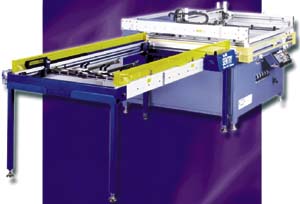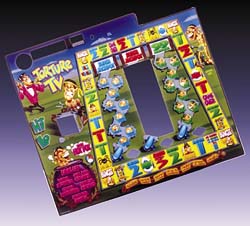When you consider decorating, one would think glass is a constant in the variable-filled world of screen printing. But the glass-decorating market is unique and challenging, in part because of the wide variety of applications where glass is used, but also because of variations in the substrate
When you consider decorating, one would think glass is a constant in the variable-filled world of screen printing. But the glass-decorating market is unique and challenging, in part because of the wide variety of applications where glass is used, but also because of variations in the substrate
Common uses for glass containers include food, alcoholic and non-alcoholic beverages, cosmetics, and drinkware. Many glass containers are coated to protect them from scratching during handling. These coatings can be polyethylene emulsions, or they can be lubricants such as AP5, which is a liquid fatty acid.
Polyethylene emulsions are the most common and offer the highest degree of protection. Food, beer, and soft-drink containers typically use this type of coating. Here’s how they are applied: Glass containers may be passed through a lehr or kiln after they are manufactured. This process, known as annealing, removes stress from the glass and adds strength. A tin-oxide primer is spray applied as the containers exit the lehr. This is commonly known as hot-end treatment. The polyethylene emulsion is spray applied over the primer. Without the primer, the emulsion does not have sufficient adhesion to the glass to offer protection.
The emulsion is usually applied at about 250°F (120°C) in a process referred to as cold-end treatment. The recommended amount of coating varies with the end-use requirements. More emulsion results in more protection. For example, beer bottles usually require amounts of 0.016 mg/sq in. or greater, but food containers only require 0.005-0.010 mg/sq in.
Advertisement
As an alternative to emulsions, lubricants such as AP5 may be applied. AP5 is used for applications like wine and food containers, where the containers tend to be handled with more care. Like the PE emulsions, AP5 is spray applied, typically at 200°F (93°C) or less. Because of the low temperature, this process may also be referred to as cold-end treatment. In contrast, cosmetic bottles usually do not require protective coatings, primarily because of the way they are handled.
In the glass market, the advantages of UV decorating continue to be recognized. But the aforementioned protective coatings can have a major impact on ink adhesion, especially with UV-curable ink formulations. To achieve desired results with UV inks, it is important to know if you are printing directly onto the glass or onto a protective coating. You must also know what type of coating has been applied. It is also important to understand end-use requirements for the decorated containers.
For example, cosmetic containers need resistance to alcohol and essential oils, while beer and soft-drink containers need resistance to water, and drinking ware needs resistant to dishwashing. Having this information helps ink manufacturers make proper recommendations for pretreatment, catalysts, and curing conditions that will give the best printed results.


 Case Studies2 months ago
Case Studies2 months ago
 Art, Ad, or Alchemy2 months ago
Art, Ad, or Alchemy2 months ago
 Andy MacDougall2 months ago
Andy MacDougall2 months ago
 Columns3 weeks ago
Columns3 weeks ago
 Editor's Note3 weeks ago
Editor's Note3 weeks ago
 Marshall Atkinson3 weeks ago
Marshall Atkinson3 weeks ago
 Thomas Trimingham2 months ago
Thomas Trimingham2 months ago
 News & Trends2 months ago
News & Trends2 months ago













